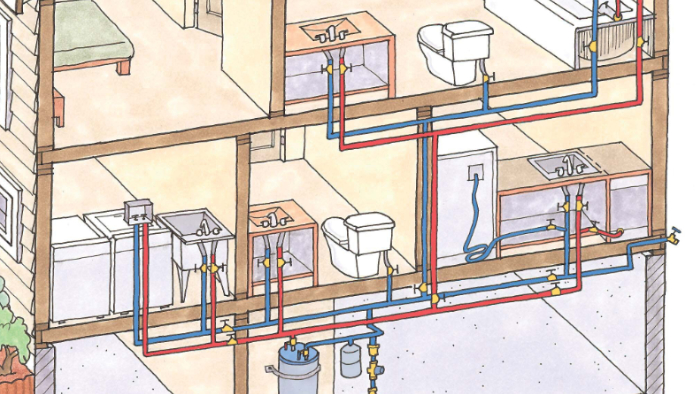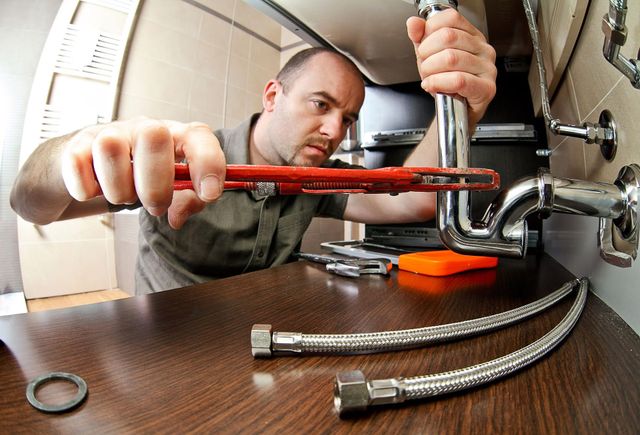This great article directly below in relation to Plumbing Installation 101: All You Need to Know is incredibly remarkable. You should take a look.

Recognizing how your home's plumbing system functions is necessary for each house owner. From delivering clean water for alcohol consumption, food preparation, and bathing to securely eliminating wastewater, a well-kept plumbing system is critical for your household's health and convenience. In this detailed overview, we'll check out the complex network that comprises your home's pipes and deal pointers on maintenance, upgrades, and handling common concerns.
Introduction
Your home's plumbing system is greater than just a network of pipelines; it's a complicated system that guarantees you have accessibility to clean water and efficient wastewater elimination. Knowing its parts and exactly how they work together can help you protect against expensive fixings and make sure everything runs efficiently.
Basic Parts of a Plumbing System
Pipelines and Tubing
At the heart of your pipes system are the pipes and tubing that lug water throughout your home. These can be made from numerous materials such as copper, PVC, or PEX, each with its benefits in regards to resilience and cost-effectiveness.
Components: Sinks, Toilets, Showers, etc.
Components like sinks, toilets, showers, and tubs are where water is used in your home. Recognizing how these components connect to the pipes system helps in detecting problems and planning upgrades.
Shutoffs and Shut-off Points
Shutoffs control the flow of water in your plumbing system. Shut-off valves are critical during emergencies or when you need to make fixings, permitting you to isolate parts of the system without interfering with water flow to the whole residence.
Supply Of Water System
Main Water Line
The major water line connects your home to the metropolitan supply of water or an exclusive well. It's where water enters your home and is distributed to different components.
Water Meter and Pressure Regulator
The water meter steps your water use, while a pressure regulatory authority guarantees that water flows at a risk-free stress throughout your home's pipes system, preventing damage to pipelines and fixtures.
Cold Water vs. Warm water Lines
Comprehending the distinction in between cold water lines, which provide water straight from the major, and hot water lines, which carry warmed water from the water heater, aids in fixing and preparing for upgrades.
Drain System
Drain Water Lines and Traps
Drain pipelines bring wastewater far from sinks, showers, and commodes to the sewer or septic system. Catches protect against drain gases from entering your home and also trap debris that could trigger blockages.
Air flow Pipelines
Air flow pipelines permit air right into the water drainage system, stopping suction that can reduce water drainage and create traps to empty. Correct ventilation is necessary for keeping the honesty of your pipes system.
Relevance of Correct Water Drainage
Making certain appropriate drain avoids backups and water damage. Routinely cleansing drains and maintaining traps can prevent costly repairs and expand the life of your pipes system.
Water Furnace
Sorts Of Hot Water Heater
Hot water heater can be tankless or standard tank-style. Tankless heating units heat water on demand, while containers save heated water for prompt usage.
Updating Your Plumbing System
Reasons for Updating
Updating to water-efficient fixtures or replacing old pipes can boost water quality, reduce water expenses, and boost the worth of your home.
Modern Plumbing Technologies and Their Benefits
Check out innovations like wise leak detectors, water-saving toilets, and energy-efficient hot water heater that can conserve cash and decrease ecological effect.
Cost Considerations and ROI
Compute the upfront costs versus long-lasting cost savings when considering pipes upgrades. Numerous upgrades pay for themselves via minimized utility costs and less repair work.
Just How Water Heaters Link to the Pipes System
Recognizing how hot water heater link to both the cold water supply and warm water distribution lines helps in detecting issues like inadequate warm water or leakages.
Upkeep Tips for Water Heaters
Frequently purging your water heater to remove sediment, inspecting the temperature level settings, and checking for leakages can extend its lifespan and improve power effectiveness.
Common Pipes Issues
Leakages and Their Reasons
Leaks can take place because of aging pipelines, loose installations, or high water pressure. Attending to leaks without delay avoids water damage and mold growth.
Blockages and Blockages
Blockages in drains pipes and bathrooms are typically triggered by purging non-flushable products or an accumulation of grease and hair. Utilizing drainpipe screens and bearing in mind what goes down your drains can stop obstructions.
Signs of Plumbing Troubles to Watch For
Low water pressure, slow-moving drains pipes, foul odors, or unusually high water expenses are indicators of potential plumbing issues that need to be dealt with immediately.
Pipes Upkeep Tips
Routine Evaluations and Checks
Arrange annual pipes evaluations to capture problems early. Try to find indicators of leakages, corrosion, or mineral buildup in faucets and showerheads.
Do It Yourself Upkeep Tasks
Straightforward tasks like cleaning faucet aerators, looking for toilet leaks using dye tablet computers, or insulating subjected pipes in chilly environments can protect against significant pipes concerns.
When to Call a Professional Plumbing Technician
Know when a pipes issue needs expert experience. Attempting complicated repair work without proper knowledge can cause more damages and higher repair service expenses.
Tips for Lowering Water Use
Straightforward habits like fixing leaks promptly, taking shorter showers, and running full loads of laundry and dishes can preserve water and reduced your energy expenses.
Eco-Friendly Pipes Options
Think about lasting pipes products like bamboo for floor covering, which is durable and eco-friendly, or recycled glass for countertops.
Emergency Preparedness
Steps to Take Throughout a Pipes Emergency situation
Know where your shut-off shutoffs lie and how to switch off the water in case of a burst pipe or major leakage.
Value of Having Emergency Situation Calls Helpful
Maintain call details for local plumbings or emergency situation solutions easily available for fast feedback throughout a pipes dilemma.
Environmental Influence and Preservation
Water-Saving Fixtures and Appliances
Installing low-flow taps, showerheads, and bathrooms can substantially decrease water use without giving up efficiency.
Do It Yourself Emergency Fixes (When Applicable).
Temporary repairs like using air duct tape to patch a leaking pipeline or putting a pail under a trickling faucet can decrease damages until a specialist plumbing professional arrives.
Final thought.
Understanding the makeup of your home's pipes system equips you to maintain it effectively, saving money and time on repair work. By adhering to regular upkeep routines and staying educated regarding modern-day plumbing technologies, you can ensure your pipes system operates efficiently for many years to come.
HOW YOUR PLUMBING SYSTEM WORKS
Which Pipes Do What?
Blue lines = fresh water supply entering the building Red lines = hot water supply entering the building Grey lines = pipes carrying waste away from the building and venting pipes carrying gases away from the building (through the roof) YOUR MAIN PLUMBING SYSTEMS
There are two main plumbing systems that support your home s basic plumbing needs one that brings clean water into your home, and one that sends dirty water away from your home. Connected to the toilet, bath, shower, and other faucets in your home, these two systems keep your water flowing in the right directions.
ACCESSING FRESH WATER
Fresh and clean water is brought into your home through the main water supply line . Filtered through one pipe, this water is pressured to flow into the various fixtures in your home at any given time.
This water can be sourced from a well located on your property, a pond or river (mostly cottages), or, as in most cases, from the city s municipal water treatment centre. However, it is important to note that water that is untreated, such as the water siphoned from ponds or rivers, may not be safe to drink. Personal water supplies always need to be treated for hardness and contaminants before consumed.
MUNICIPAL WATER SUPPLIES
Improve taste and odour Remove sediment Eliminate hardness Reduce chlorine COLD WATER SUPPLY VS. HOT WATER SUPPLY
Cold water flows into your home or building through the service line, which then distributes hot or cold water to your fixtures. This line is most commonly run through a central column that runs floor to floor. Hot water runs in short and straight pipes as the longer the pipeline, the more heat that will be lost in the transfer. Having shorter pipes also allows residents to access hot water more quickly.
WASTE WATER SYSTEM
Your wastewater system is divided into two parts pipes that send wastewater away from your home and venting pipes that send sewer gas away from your home. Sewage water travels through pipes that flush the water and waste towards local sewers that are operated and managed by your city or town. Most sewer systems rely on gravity to move the wastewater to where it needs to go.
The further away from your toilet or sink, the larger wastewater pipes become. This allows for waste to be disposed of from various parts of your home or business at once without pipe blockages. The angle and flow of these pipes are also essential for keeping your waste pipes clear of build up.
https://harrisplumbing.ca/how-your-home-plumbing-system-works/

Hopefully you enjoyed our article about The Inner Workings of Your Home's Plumbing. Thank you so much for finding the time to read through our content. Loved our write up? Please share it. Let someone else locate it. We cherish your readership.
Click Here